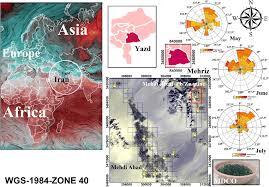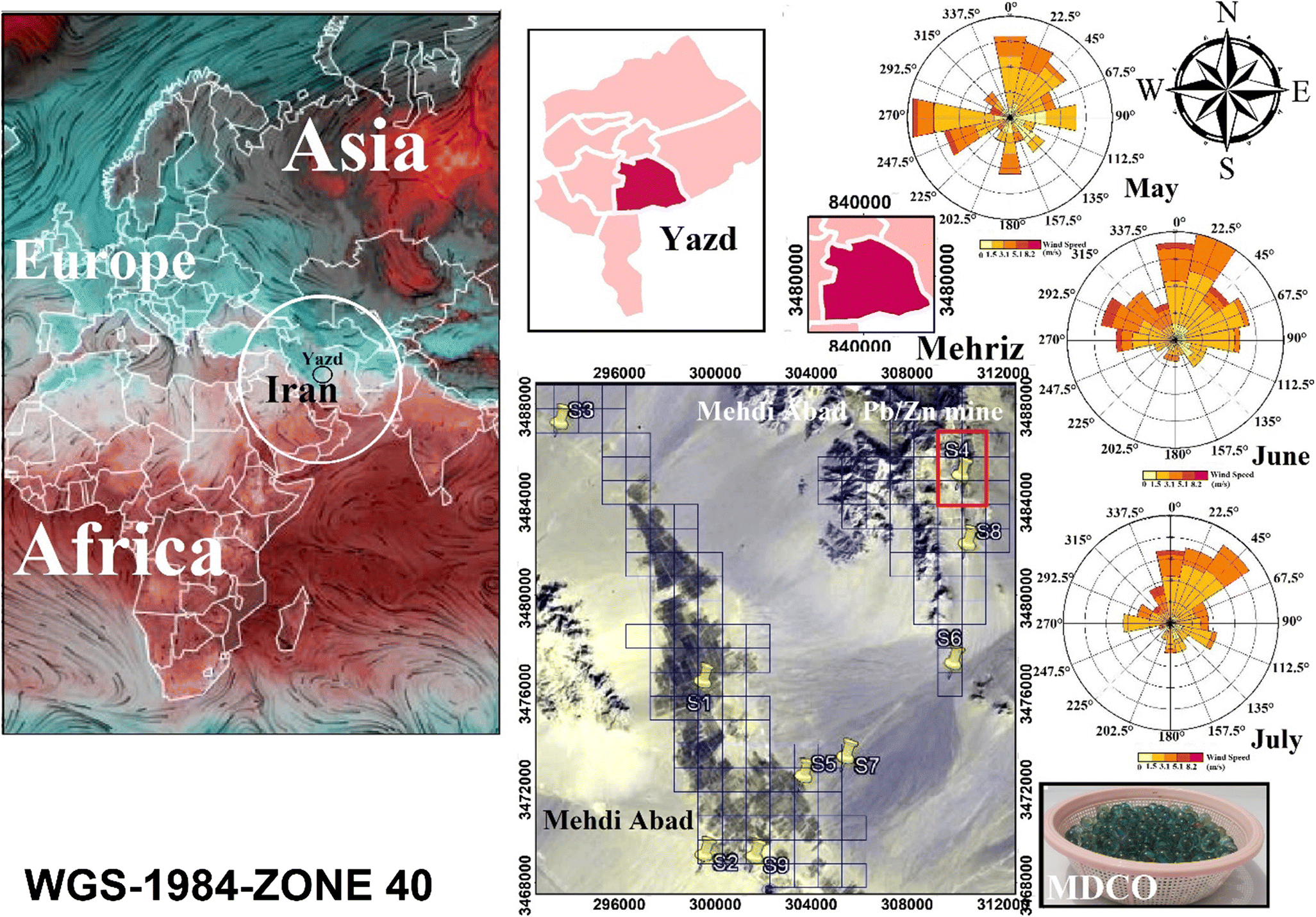Evaluation of trace elements pollution in deposited dust on residential areas and agricultural lands around Pb/Zn mineral areas using modified pollution indices
Published in Earth & Environment, Research Data, and Agricultural & Food Science

Abstract
Dust deposited on residential and agricultural lands can have serious consequences for the ecosystem when toxic trace elements are present. This study aimed to assess the ecological risk of the trace elements found in the deposited dust around the Mehdi Abad Pb/Zn mine, Yazd, Iran, using several modified pollution indices. The dust samples were collected by the grid method and a Marble Dust Collector (MDCO) sampler to evaluate the concentration of thirty trace elements: nickel (Ni), lead (Pb), barium (Ba), beryllium (Be), chromium (Cr), copper (Cu), dysprosium (Dy), lanthanum (La), lithium (Li), niobium (Nb), tin (Sn), neodymium (Nd), praseodymium (Pr), rubidium (Rb), Ferrum (Fe), sulfur (S), selenium (Se), strontium (Sr), tantalum (Ta), terbium (Tb), zirconium (Zr), tellurium (Te), thorium (Th), titanium (Ti), uranium (U), vanadium (V), yttrium (Y), ytterbium (Yb), thulium (Tm), and cobalt (Co). This study employed multivariate statistical techniques, including Hierarchical cluster analysis (HCA) and the IDW interpolation technique, as well as modified pollution indices such as Enrichment Factor (EF), Modified Pollution Index (MPI), Modified Potential Ecological Risk Index (MRI), and Modified Hazard Quotient (mHQ). All the statistical data analyses were performed via SPSS Statistics, version 22.00. The HCA results showed that all of these trace elements, except Fe, form a group and had similar behavior. The average levels of all elements in the dust samples except for Cr, S, Sr, Ta, Tb, and Te exceeded the background value. The results confirmed that both anthropogenic activities and natural factors were responsible for the trace elements found in the dust. The average EF value for Pb (43.26) indicated its extremely high enrichment in the study area. The MPI, mHQ, and MRI results showed that 33%, 100%, and 33.33% of the dust samples were in the heavily polluted, extreme severity, and high risk categories, respectively. The IDW analysis results revealed that the highest value of the MRI and mHQ indices was in agricultural lands and residential areas; the predominant wind direction also played a role in transferring the elements from the mine to these areas. In general, the results indicated that mining activities increased the ecological risk in Mehdi Abad due to the presence of trace elements, especially Pb.
Introduction
The introduction explains the environmental risks of dust emissions from Pb/Zn mining and smelting activities. It highlights how trace elements in deposited dust can harm ecosystems and human health, especially in residential and agricultural areas. The study aims to evaluate the level of contamination using modified pollution indices and identify pollution sources.
Materials and Methods
This section outlines the study area characteristics, sampling strategy (residential vs. agricultural zones), and analytical techniques used to determine concentrations of trace elements (e.g., Pb, Zn, As, Cd, Cu). It also introduces various pollution indices, such as the Geo-accumulation Index (I_geo), Pollution Index (PI), and Modified Pollution Index (MPI), used to assess contamination severity.
Results and Discussion
The results present concentration levels of trace elements and the values of pollution indices across different locations. Spatial differences in contamination are discussed, with higher pollution levels generally observed closer to mining operations. The modified indices offered more precise assessment by accounting for multiple pollutants and background levels. Potential sources of pollution are identified through statistical analysis.
Conclusions
The study concludes that both residential and agricultural areas are impacted by trace element pollution, with some zones exceeding safe thresholds. Modified pollution indices effectively reflect the severity and spatial extent of contamination. The findings underscore the need for regular monitoring and management to minimize environmental and health risks.
Follow the Topic
-
Journal of Environmental Health Science and Engineering

Journal of Environmental Health Science & Engineering presents timely research on all aspects of environmental health science, engineering and management.






Please sign in or register for FREE
If you are a registered user on Research Communities by Springer Nature, please sign in